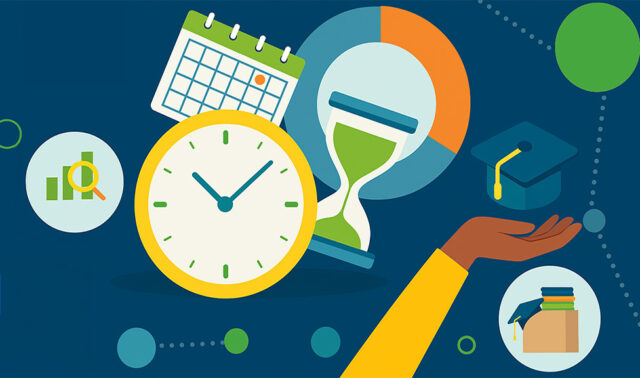
Higher Ed
Collaboration for Completion: Expanding Access With Course Sharing Infographic
Course availability is a barrier to on-time graduation. Learn how course sharing helps learners stay on track and simplifies processes for institutions.
We use cookies to help you navigate efficiently and perform certain functions. You will find detailed information about all cookies under each consent category below.
The cookies that are categorized as "Necessary" are stored on your browser as they are essential for enabling the basic functionalities of the site. ...
Necessary cookies are required to enable the basic features of this site, such as providing secure log-in or adjusting your consent preferences. These cookies do not store any personally identifiable data.
Functional cookies help perform certain functionalities like sharing the content of the website on social media platforms, collecting feedback, and other third-party features.
Analytical cookies are used to understand how visitors interact with the website. These cookies help provide information on metrics such as the number of visitors, bounce rate, traffic source, etc.
Performance cookies are used to understand and analyze the key performance indexes of the website which helps in delivering a better user experience for the visitors.
Advertisement cookies are used to provide visitors with customized advertisements based on the pages you visited previously and to analyze the effectiveness of the ad campaigns.
Other cookies are those that are being identified and have not been classified into any category as yet.

Today’s credentials can now list or describe non-traditional attributes and activities that nonetheless speak to a learner’s experience and achievements. In addition to degree programs, grade point averages and similar attributes, credentials can list achievements such as:
Plus, faster sending and receiving would greatly benefit learners. It can take days or weeks for schools and jobs to receive a paper credential. Digital transfers occur nearly instantly.
Furthermore, digital credentials with social sharing capabilities give students yet another advantage in the job market. When it comes to filling open positions, employers are relying more heavily on social media than ever before. According to research from CareerBuilder, 70 percent of employers use social media as a screening tool. In fact, 3 out of 10 have employees specifically assigned to social media recruiting.
What are they looking for? According to CareerBuilder, while many looked for details that may indicate a person can be a liability if hired, 61 percent look for information that supports an applicant’s qualifications for the job in question. With that in mind, what could be a greater indicator than a verified copy of the applicant’s credentials?
What’s more, employers that use social media as a hiring tool are 57 percent less likely to interview a candidate if they can’t find that person online. Shareable digital credentials help students build the social online profiles employers are looking for.
The Adult Training and Education: Results from the National Household Education Surveys Program of 2016 revealed that a total of 27 percent of adults reported having a non-degree credential: a postsecondary educational certificate, certification or license.
In addition, the majority of adults (82%) reported that their most important work credential was very useful for getting a job, remaining marketable to employers or clients (81%) and improving work skills (66%).
Looking back, we can see that learner attitudes toward digital credentials have shifted from one of casual interest to constant demand in a just a few years. Such a change in perspective doesn’t happen in a vacuum. As learners have started realizing the great opportunities that come from digital credentials, so too have schools, employers and industry organizations.
Today, digital has become the pathway to credential innovation, which leads us to the collaborative creation of a Comprehensive Learner Record (CLR). The CLR is an extended transcript that helps lifelong learners collect, verify and share a digital portfolio of courses completed, skills learned and experiences lived. It provides a complete picture of academic and experiential student journey in digital format.
In 2016, NASPA and AACRAO (American Association of Collegiate Registrars and Admissions Officers) partnered to help institutions create digital records to help students describe the depth and breadth of their learning.
At the same time, driven by the belief that employers are not getting what they want, Parchment continued to work with a growing number of universities to accelerate the trend, expanding the ecosystem, increasing the value of academic credentials and serving students and employers better.
It’s our goal to help institutions transform and facilitate the exchange of a more comprehensive learner record, making the credential a more insightful and valuable document for the employer and learner alike. One that is stackable, shareable and searchable.
We are helping to engage employers about the information that can help them discover, evaluate and develop talent. We are putting learners in control with a comprehensive record that is actionable for a variety of opportunities and ensuring its global distribution.
According to award-winning author Jeffrey Selingo, American higher education is in the midst of a credentials craze. In response to questions about the value of the college degree and its meaning in a changing workplace, colleges, industry groups and private companies (like Parchment) are rolling out a wave of new types of credentials. In many ways, Selingo says, the journey to acquire higher education will never end.
With growing interest in information around learning outcomes by employers and licensing boards in the US and abroad, the digital credential story is about changing the form and function of the transcript to meet the changing needs of all constituents. The function of credentials has realized a meaningful shift over the last 20 years, and along with that the form of credentials has shifted as well – from beautiful looking documents that hang on a wall to accessible, machine-readable data.
For more information check out our blog post, “The Comprehensive Student Record: What to Include and Why.”
